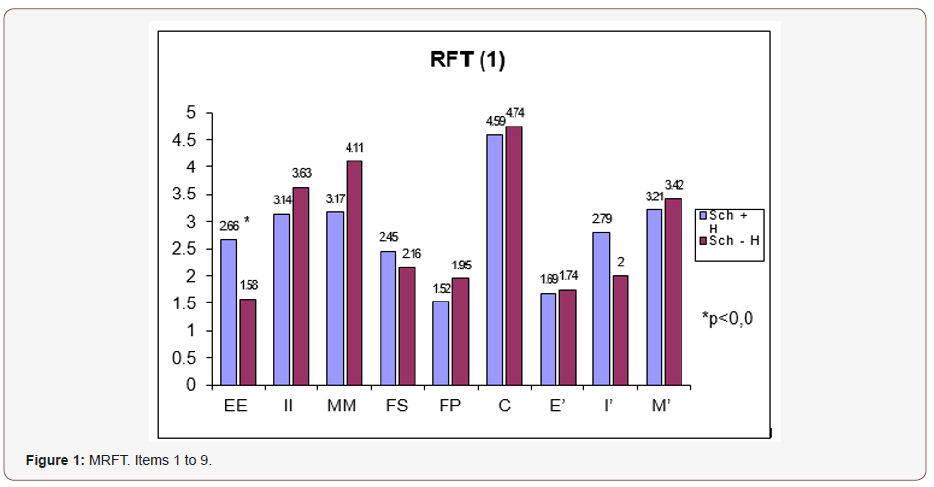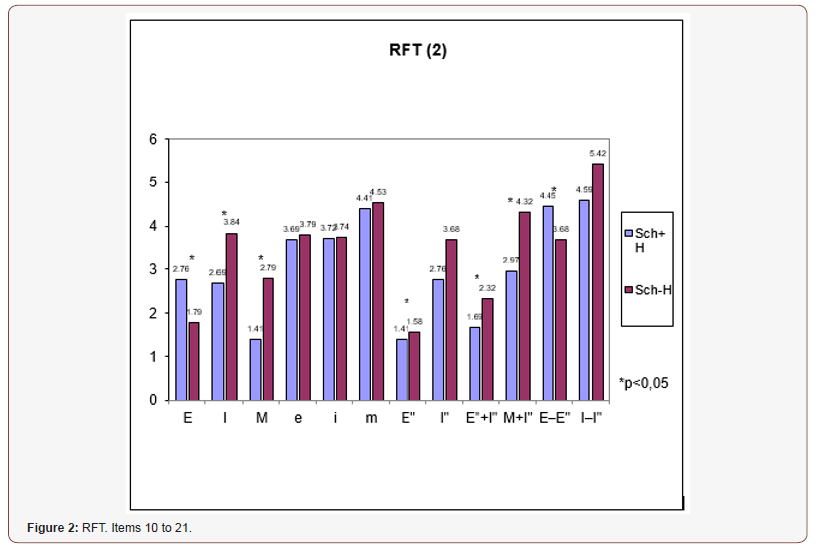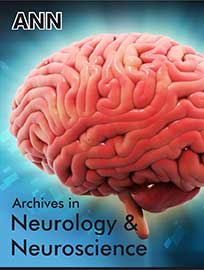 Research Protocol
Research Protocol
Psychological Dissection of Homicidal Behavior in Schizophrenia: Focus on Frustration Tolerance, a Pilot Study
Petar Marinov1*, Kaloyan Kukov2, Anka Petrova1, Pavlina Petkova3, Vladimir Velinov3 and Sylvia Ralovska1
1Mental Health Center, Bulgaria
2Medical University, Bulgaria
3Varna Free University, Bulgaria
Petar Marinov, Mental Health Center “Prof. Nikola Schipkowensky” LTD, 59 Exarch Jossif str., 1000 Sofia, Bulgaria.
Received Date: March 07, 2019; Published Date: March 12, 2019
Abbreviations: Schizophrenia; Homicide; Frustration tolerance
Background
Emotional dysregulation in schizophrenia results from a pathological transformation of emotions. Rosenzweig frustration test (RFT) is a projective test that discriminates whether an individual reacts with a response of tolerance or intolerance under a frustrating situation. The test comprises 24 pictures that relate to 21 specific categories of assessment of coping strategies in frustration situations. To our knowledge, there is no study on frustration tolerance comparing schizophrenia with or without homicide in the current literature. Our study investigated this area.
Materials and Methods
Two groups of patients with schizophrenia were compared. First group consisted of patients with paranoid schizophrenia who had committed homicide 1 to 3 months prior to assessment (n=43, male 35, female 8). Second group included patients with paranoid schizophrenia without homicide (n=40, male 30, female 10). There were no statistically significant differences between groups in terms of age and gender (Table 1).
Table 1: Age.

Rosenzweig P-F test (Bulgarian version) was used to assess parameters of frustration tolerance and aggression (1, 2). Data were analyzed by SPSS v.12.0 (2003), one-way ANOVA (3).
Result
As presented on Figure 1, extra-punitivity is statistically more prominent in the group of patients with schizophrenia and homicide (p<0.05). This is consistent with paranoid ideation of general environmental threat. Other differences without statistical significance are on categories “frustrating situation” and “intropunitivity towards frustrating situation”. So, the situation is more provoking in the group with homicide than one without homicide. Not surprisingly, results for categories “intro-punitivity” and “impunitivity” are higher in the group schizophrenia without homicide, possibly due to better management of violent tendencies.
Figure 2 shows that results on “extra-punitivity toward person” are significantly higher in schizophrenia with homicide group than in schizophrenia without homicide group. Higher levels of hostility against others in the group with homicide are one possible explanation. Similar results were found in the item “total blaming of others”, also closely related to hostility. Lower results on categories “intro-punitivity towards person”, “impunitivity towards person”, “self- inculpation”, “collective tendency to self- exculpation” and “collective tendency to exculpation” also might represent that homicidal schizophrenia patients show some specific peculiarities. These results might also be explained as a pathological personality change leading to lower ability to cope with blame. Another possible explanation is premorbid personality traits (Figure 1).

EE – exrtra-punitivity (“the individual tends to blame the external world”); II – intro-punitivity (“the individual tends to blame himself,”); MM – impunitivity (avoidance of aggression); FS – frustrating situation; FP – frustrating person; C – coping with the frustrating situation; E’ – extra-punitivity towards frustrating situation; I’ – intra-punitivity towards frustrating situation; M’ – impunitivity towards frustrating situation (Figure 2).

Е – extra-punitivity towards person; i – intro-punitivity towards person; M – impunitivity towards person; e – extra-punitivity towards coping with the frustrating situation; i – intro-punitivity towards coping with the frustrating situation; m – impunitivity towards coping with the frustrating situation; E” – blaming others (extra-motivated self- exculpation); I” – self - inculpation (intramotivated); E” + I” – collective tendency to self-exculpation; М + I” – collective tendency to exculpation; Е – E” – total blaming of others; I – I” – total self-blaming.
Conclusion
The presented study results show some important differences between groups. Impairment of the ability for recognition of emotions (of oneself and of others) is a common pathway of dysregulation of emotions in schizophrenia. Persistence of negative emotions (eg. hostility) as well as their attribution to other people and to external situations is a putative mechanism for psychotic projection. Preservation of premorbid personality structure and better coping strategies can possibly explain a less distorted concept of blame in schizophrenia patients who have not committed homicide.
Acknowledgemnet
None
Conflict of Interest
No conflict of interest.
References
- Rosenzweig S (1963) Validity of the Rosenzweig Picture-Frustration Study with felons and delinquents. Journal of Consulting Psychology 27(6): 535-536.
- Rauchfleisch U (1971) Neue Interpretationsmöglichkeiten des Rosenzweig Picture-Frustration-Tests durch Verwendung von Indizes. Schweiz Z Psychol 30: 299-311.
- SPSS Inc. Released (2003) SPSS for Windows, Version 12.0. SPSS Inc, Chicago, USA.
-
Petar Marinov, Kaloyan Kukov, Anka Petrova, Pavlina Petkova, Vladimir Velinov, Sylvia Ralovska. Psychological Dissection of Homicidal Behavior in Schizophrenia: Focus on Frustration Tolerance, a Pilot Study Arch Neurol & Neurosci. 3(1): 2019. ANN.MS.ID.000551.
-
Psychological Dissection, Homicidal Behavior, Schizophrenia, Frustration Tolerance, Mental Health, Emotional dysregulationm, Rosenzweig frustration test, Intro-punitivity, Impunitivity, Self- inculpation, Extra-punitivity, Pathological personality change, Hostility
-

This work is licensed under a Creative Commons Attribution-NonCommercial 4.0 International License.






